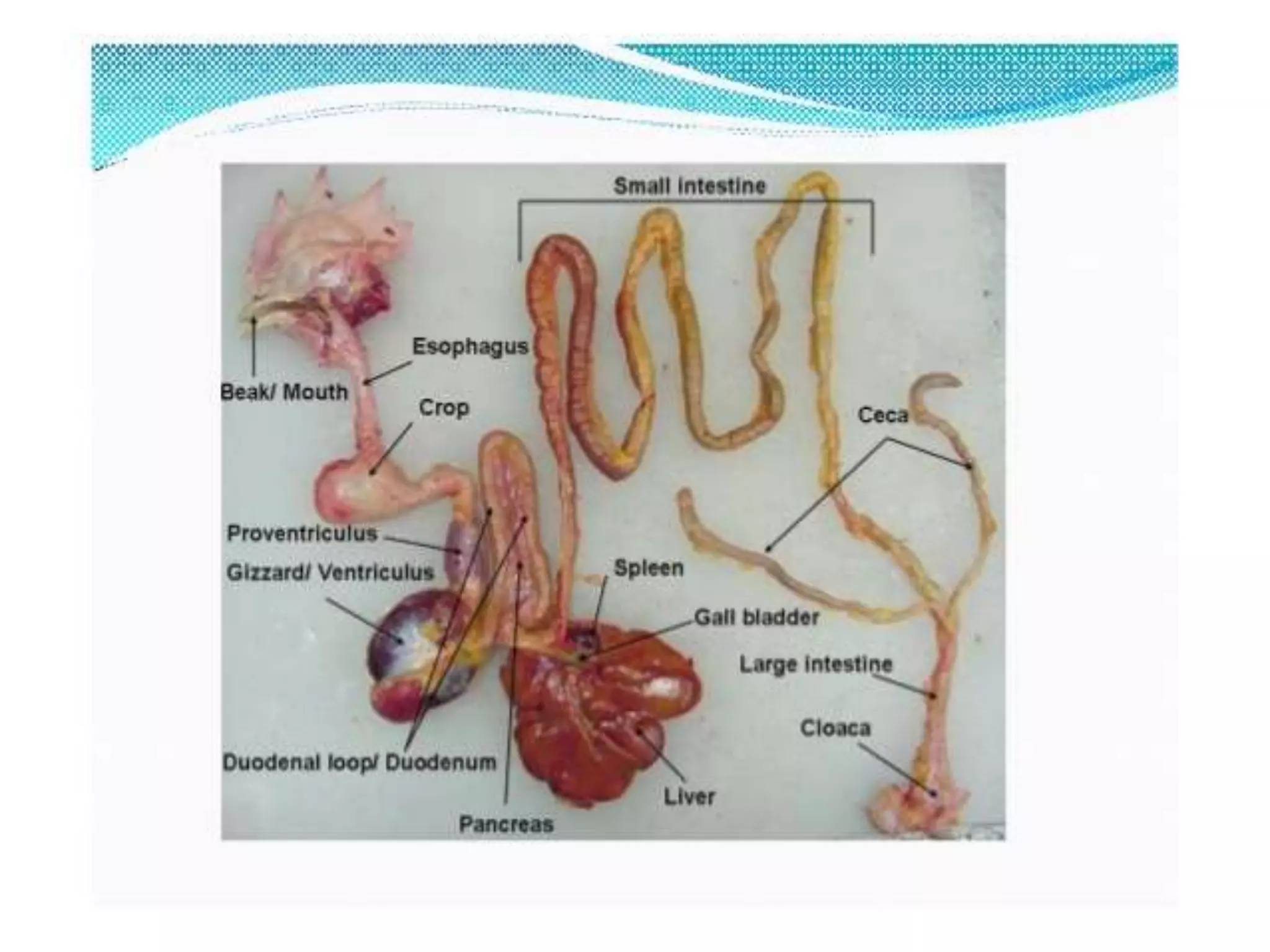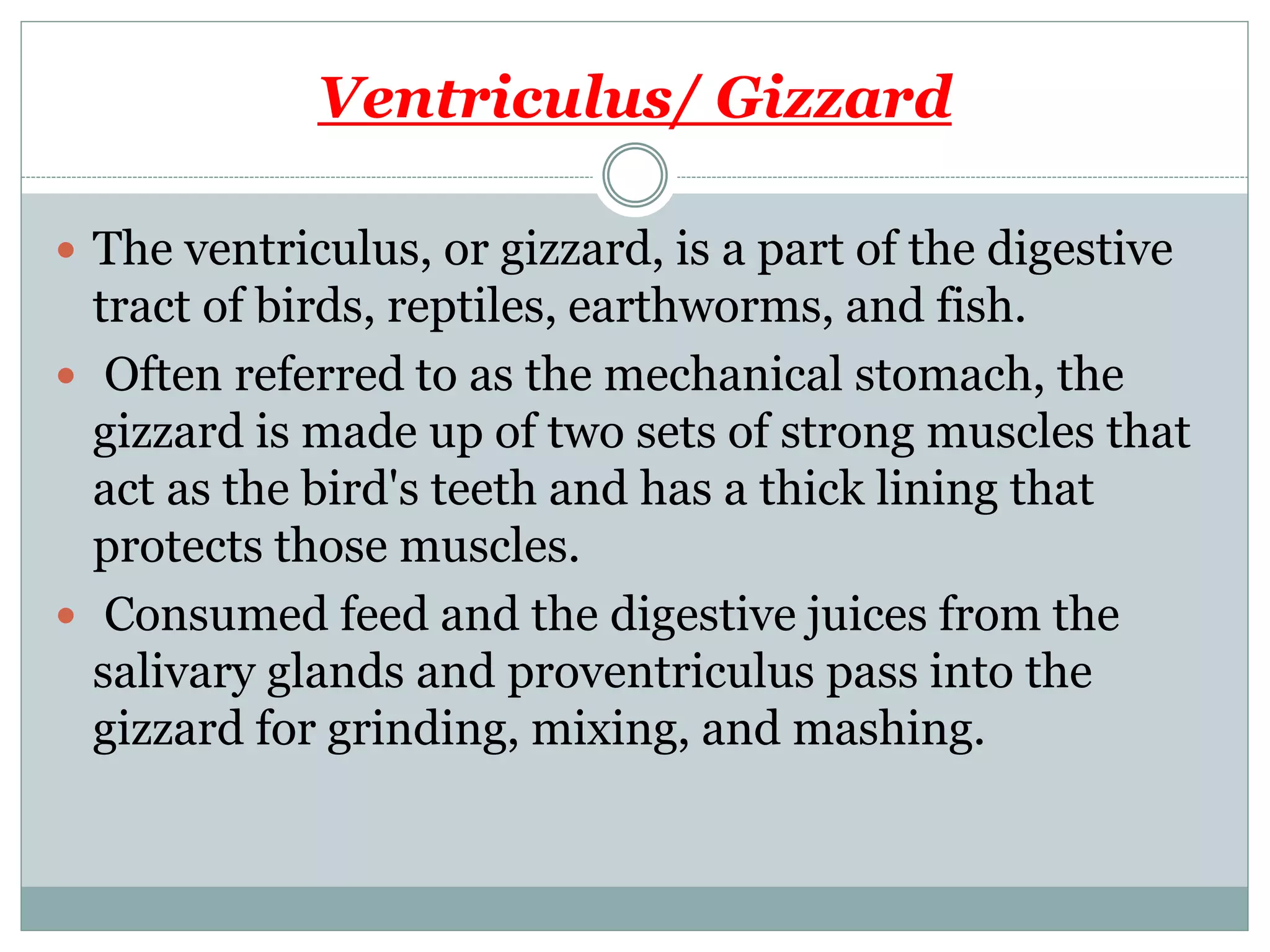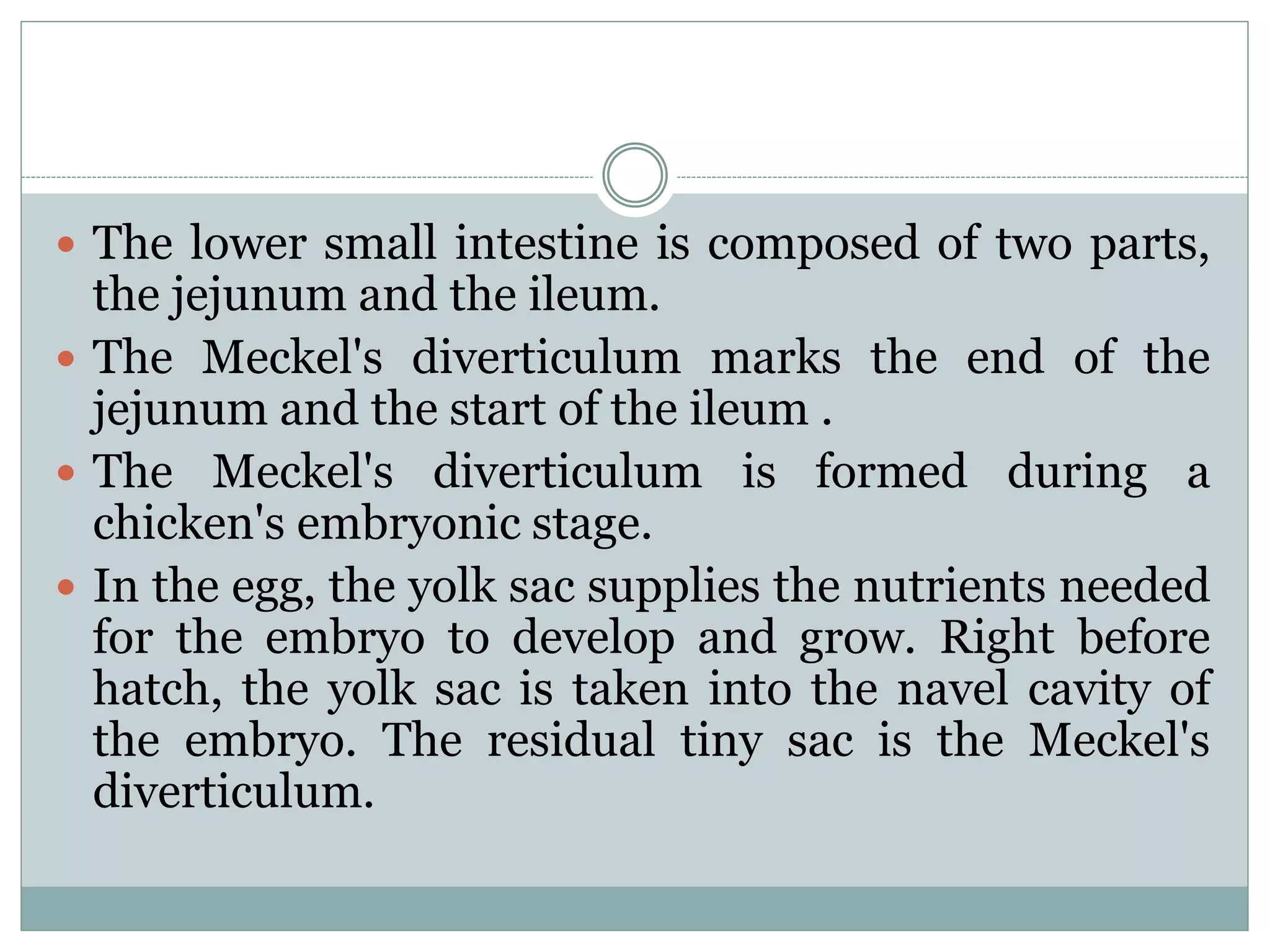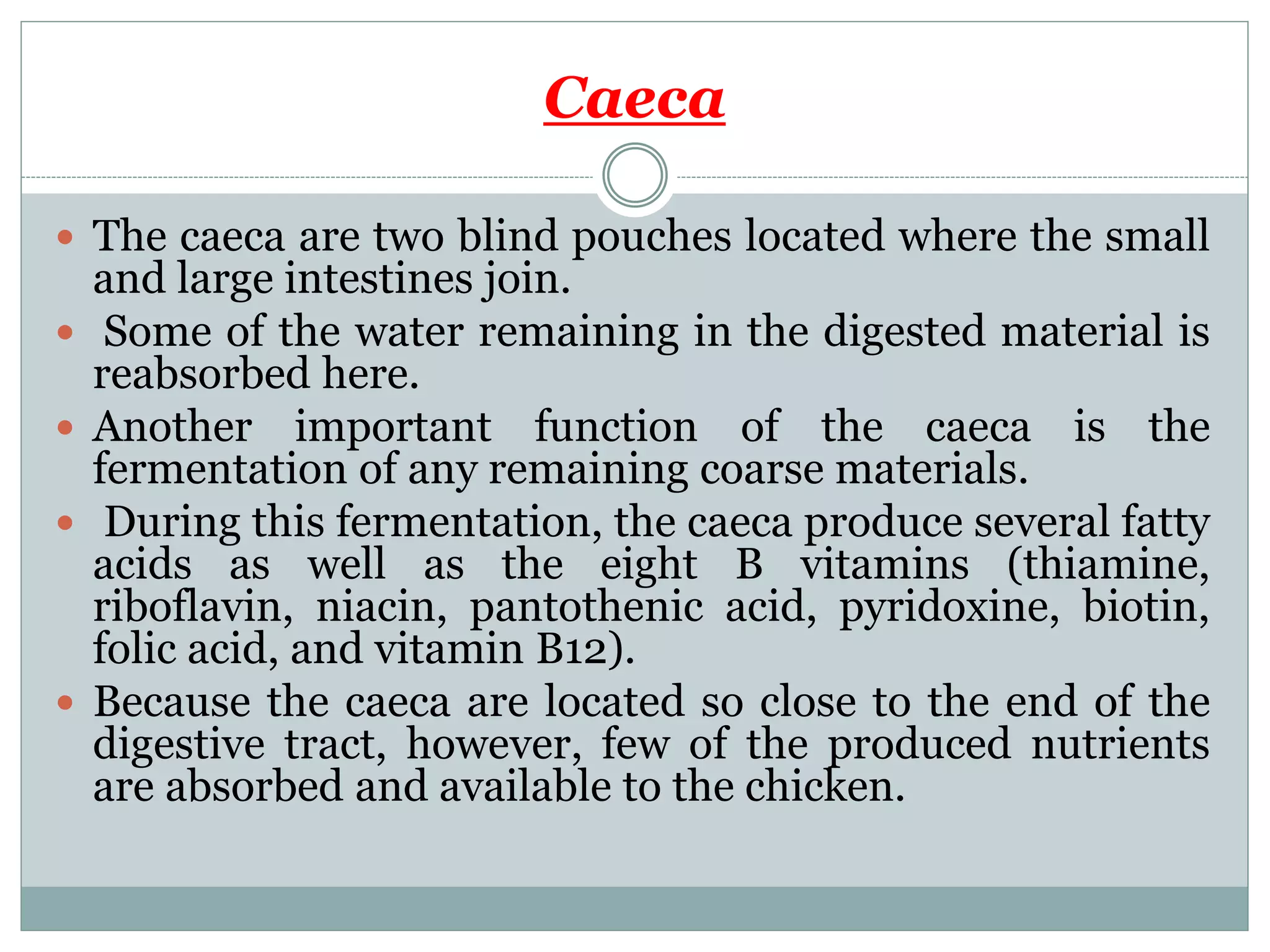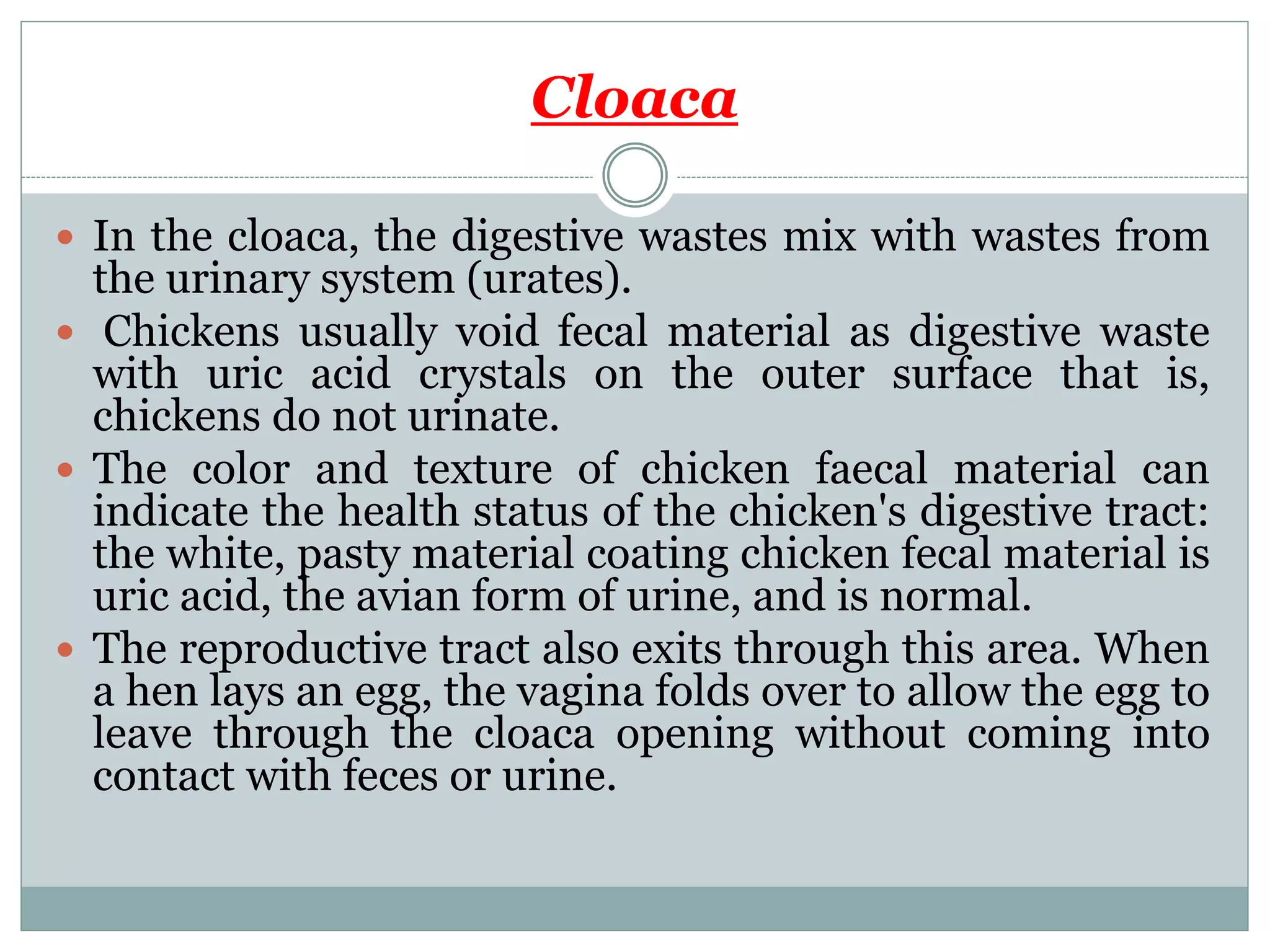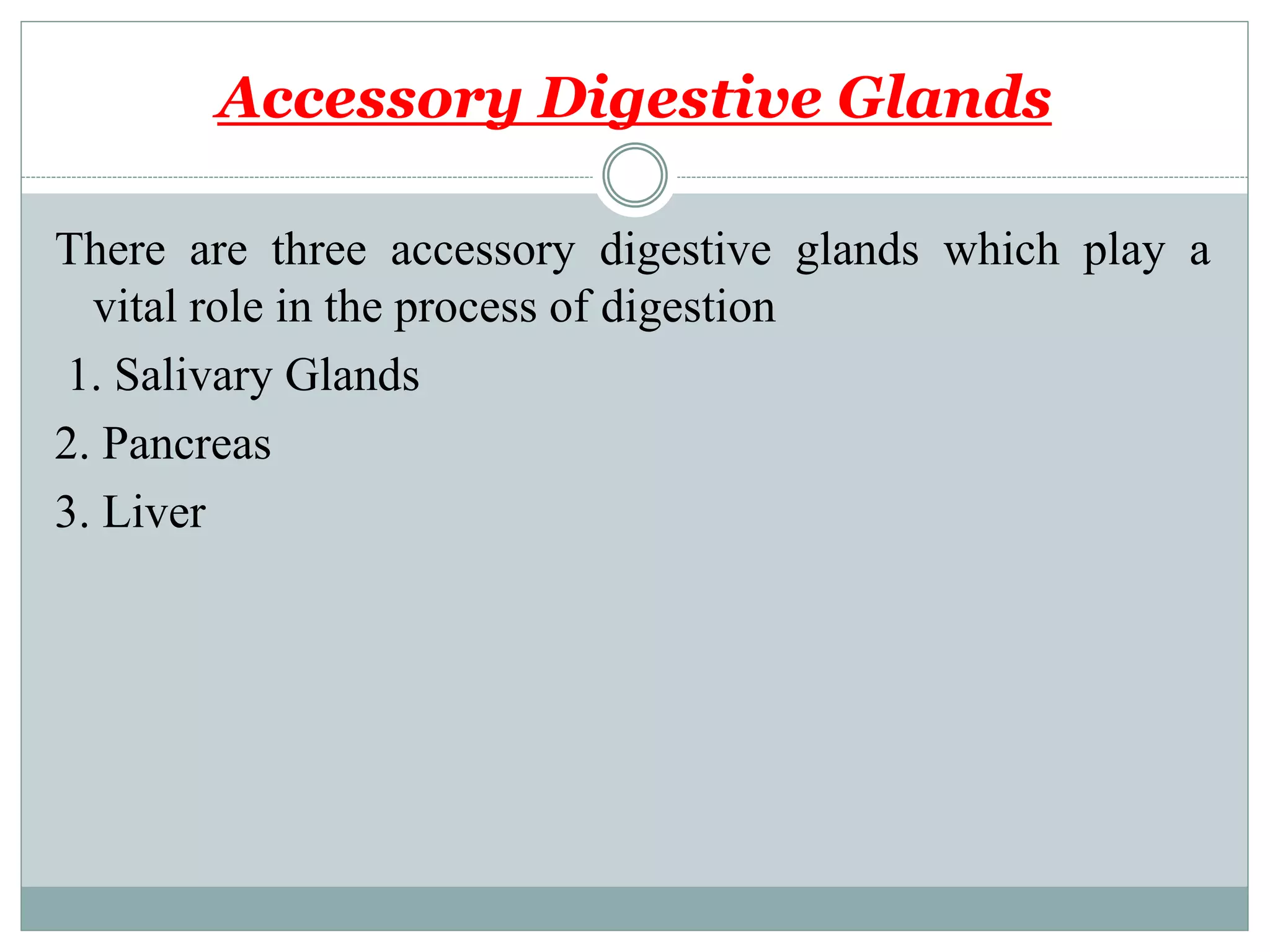The avian digestive system begins with the beak and mouth, where food is ingested but not chewed. The esophagus transports food to the crop for temporary storage. The proventriculus is the true stomach where digestion begins through enzymes. The gizzard uses strong muscles to grind food like teeth would. The small intestine continues digestion and nutrient absorption. The caeca and large intestine absorb remaining nutrients and water before waste exits through the cloaca. Accessory glands like the salivary glands, pancreas, and liver secrete enzymes and fluids to further break down food into absorbable nutrients.



